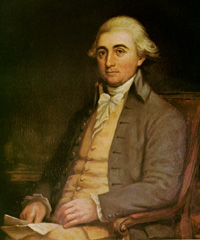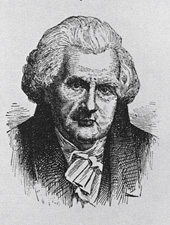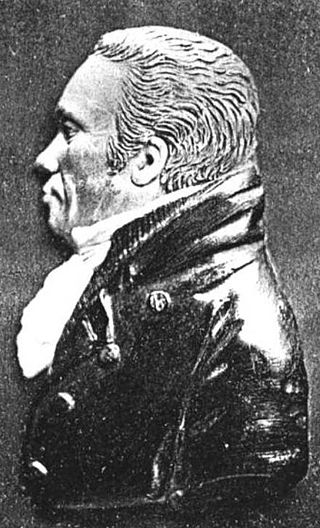Related Research Articles

Presidential elections were first held in the United States from December 15, 1788 to January 7, 1789, under the new Constitution ratified in 1788. George Washington was unanimously elected for the first of his two terms as president and John Adams became the first vice president. This was the only U.S. presidential election that spanned two calendar years without a contingent election and the first national presidential election in American history.

Jonathan Trumbull Jr. was an American politician and military officer who served as the governor of Connecticut, speaker of the United States House of Representatives, and lieutenant governor of Connecticut. He is often confused with his younger brother, John Trumbull, a famous artist during the revolutionary war and early years of the United States.
Matthew Griswold was the 17th governor of Connecticut from 1784 to 1786. He also served as the 21st lieutenant governor. He was also chief justice of the Superior Court, during the American Revolution (1769–1784).

Since Connecticut became a U.S. state in 1788, it has sent congressional delegations to the United States Senate and United States House of Representatives, beginning with the 1st United States Congress in 1789. Each state elects two senators to serve for six years in general elections, with their re-election staggered. Prior to the ratification of the Seventeenth Amendment in 1913, senators were elected by the Connecticut General Assembly. Each state elects varying numbers of members of the House, depending on population, to two-year terms. Connecticut has sent five members to the House in each congressional delegation since the 2000 United States Census.

Stephen Mix Mitchell was an American lawyer, jurist, and statesman from Wethersfield, Connecticut. He represented Connecticut in the Continental Congress and the U.S. Senate and was chief justice of the state's Supreme Court.

Thomson Joseph Skinner was an American politician from Williamstown, Massachusetts. In addition to service as a militia officer during the American Revolution, he served as a county judge and sheriff, member of both houses of the Massachusetts legislature, U.S. Marshal, and member of the United States House of Representatives. He served for two years as Treasurer and Receiver-General of Massachusetts, and after his death an audit showed his accounts to be deficient for more than the value of his estate, which led to those who had posted bonds on his behalf having to pay the debt.

The secretary of the state of Connecticut is one of the constitutional officers of the U.S. state of Connecticut. It is an elected position in the state government and has a term length of four years.

Heman Judd Redfield was an American politician from New York.

The following outline is provided as an overview of and topical guide to the U.S. state of Connecticut:
The Governor's Guards of Connecticut are four distinct units of the Connecticut State Guard, a part of the organized militia under the Connecticut State Militia. There are two foot guard units and two horse guard units. All four units are formed fully of volunteers and serve under the authority of the Connecticut Adjutant General and the Governor of the State of Connecticut, who serves as the Guards' Commander-in-Chief.
Events from the year 1788 in the United States.

The 1788–1789 United States Senate elections were the first U.S. Senate elections following the adoption of the Constitution of the United States. They coincided with the election of George Washington as the first president of the United States. As these elections were prior to the ratification of the Seventeenth Amendment in 1913, senators were chosen by state legislatures.
A special election was held in Connecticut's at-large congressional district on April 13, 1795, to fill a vacancy left by Jonathan Trumbull, Jr. (F)'s election to the Senate.

A special election was held in Connecticut's at-large congressional district on September 15, 1800 to fill a vacancy left by the resignation of Jonathan Brace (F) in May, 1800.

The exact date of the first African slaves in Connecticut is unknown, but the narrative of Venture Smith provides some information about the life of northern slavery in Connecticut. Another early confirmed account of slavery in the English colony came in 1638 when several native prisoners were taken during the Pequot War were exchanged in the West Indies for African slaves. Such exchanges become common in subsequent conflicts.

The 1788–89 United States presidential election in Connecticut took place on January 7, 1789, as part of the 1789 United States presidential election. The state legislature chose seven representatives, or electors to the Electoral College, who voted for President and Vice President.

Isaac Jennings was an American physician and writer who pioneered orthopathy.
References
- ↑ "Today in History: January 9". loc.gov. Library of Congress.